

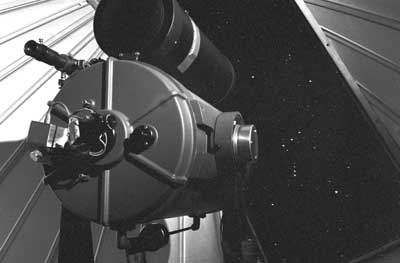
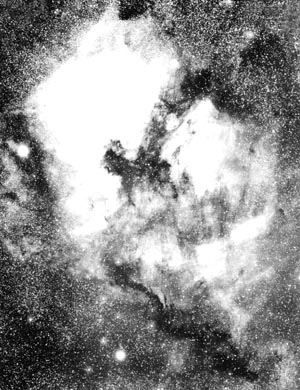 |
 |
| The Schmidt camera's wide fast f/ratio makes it a natural for recording vast areas of faint Milkey Way nebulocity. | The Schmidt camera's wide aperture, coupled with high-resolution optics, allow it to resolve detailed objects like the Omega Centauri star cluster. |
 |
A lightweight black cloth, in this case a black T-shirt, makes an effective shutter for a Schmidt camera. |
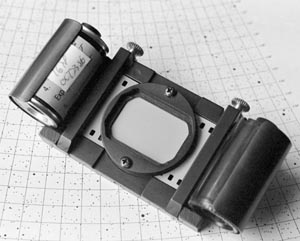 |
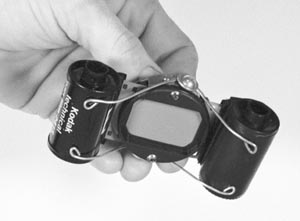 |
| The commercial roll film holder relieves the inconvenience of shooting single frane film chips. | An inexpensive roll film holder can be fashioned out of anything that will support the film cassettes so they do not fall into the light cone reflecting from the mirror to the film. |
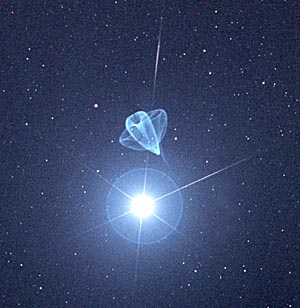 |
The bright planet Venus provides an exagerated illustration of internal reflections in a Schmidt camera. |

Go to the previous page ---- Introduction